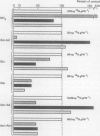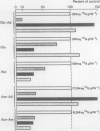Abstract
Exposure of intact alfalfa nodules to 15N2 showed that in bacteroids the greatest flow of 15N was to NH3. Label was also detected in glutamic acid, aspartic acid, and asparagine (Glu, Asp and Asn), but at far lower levels. In the host plant cytosols, more 15N was incorporated into Asn than into other compounds. Detached nodules were also used to study the metabolic pathway of N assimilation after exposure to 15N2 or vacuum infiltration with (15NH4)2SO4 in the presence or absence of different inhibitors of nitrogen assimilation: methionine sulfoximine (MSO), azaserine (AZA), or amino-oxyacetate (AOA). Treatment with MSO, an inhibitor of glutamine synthetase (GS), inhibited the flow of the label to glutamine (Gln)-amide, resulting in subsequently decreased label in Asnamide. Aza, which inhibits the formation of Glu from Gln by glutamate synthase (GOGAT), enhanced the labeling of the amide groups of both Gln and Asn, while that of Asn-amino decreased. When AOA was used to block the transamination reaction very little label was found in Asp and Asn-amino. The results are consistent with the role of GS/GOGAT in the cytosol for the assimilation of NH3 produced by N2 fixation in the bacteroids of alfalfa nodules. Asn, a major nitrogen transport compound in alfalfa, is mainly synthesized by a Gln-dependent amidation of Asp, according to feeding experiments using the 15N-labeled amide group of glutamine. Data from 15NH4+ feeding support some direct amidation of Asp to form Asn.
Full text
PDF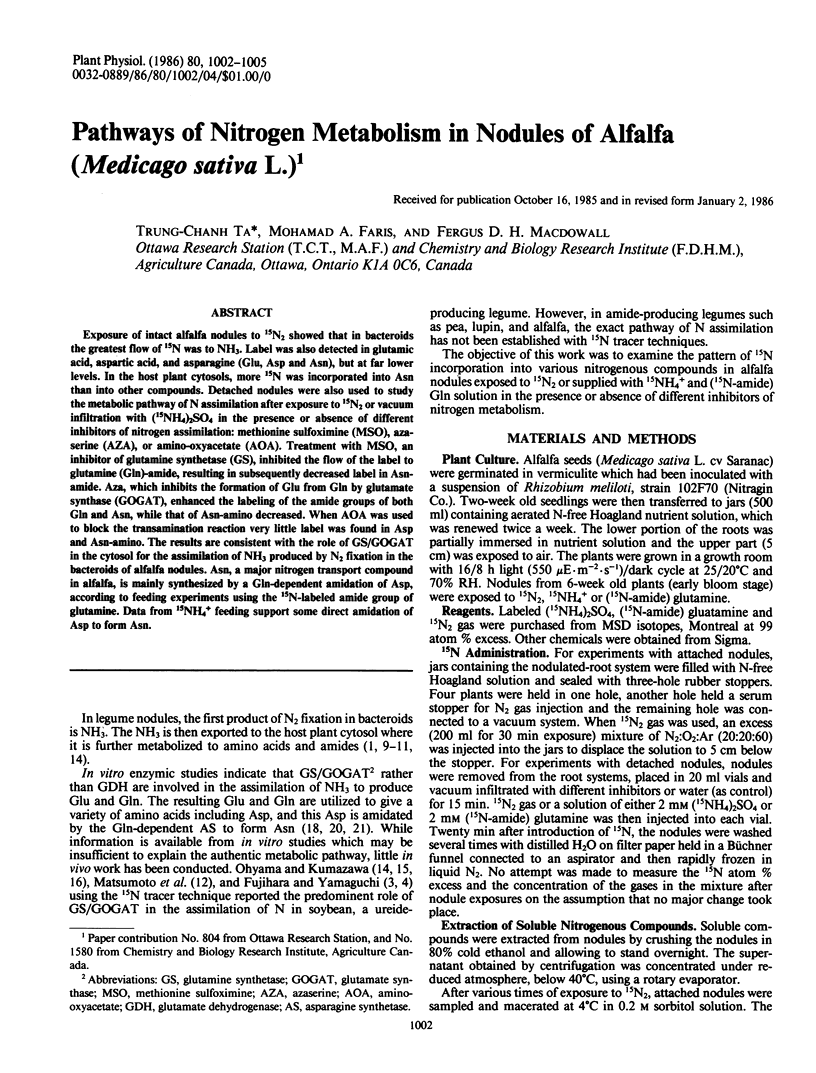
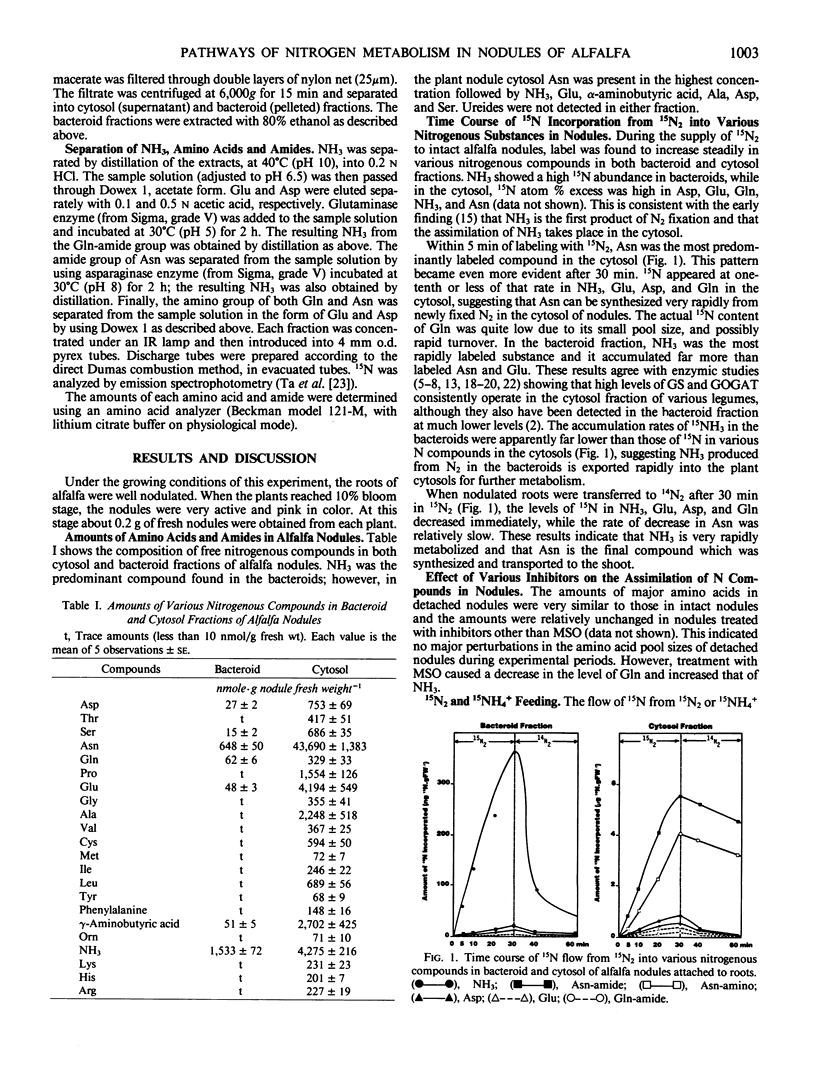
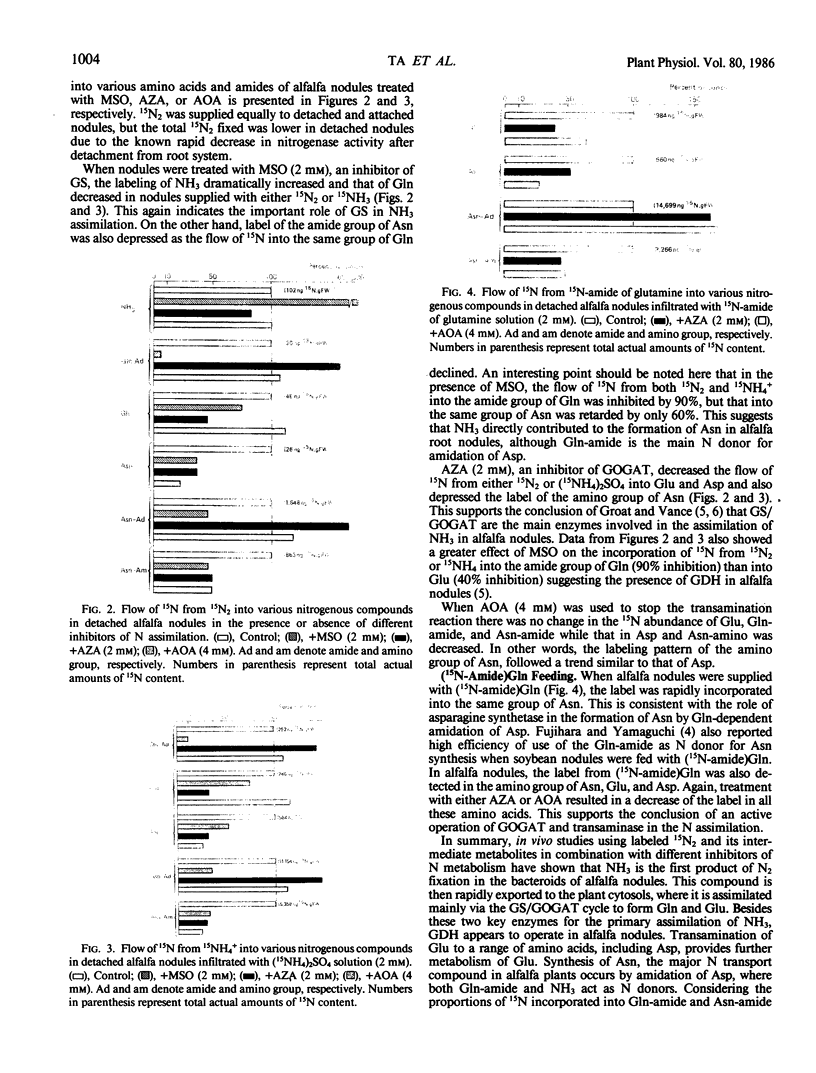
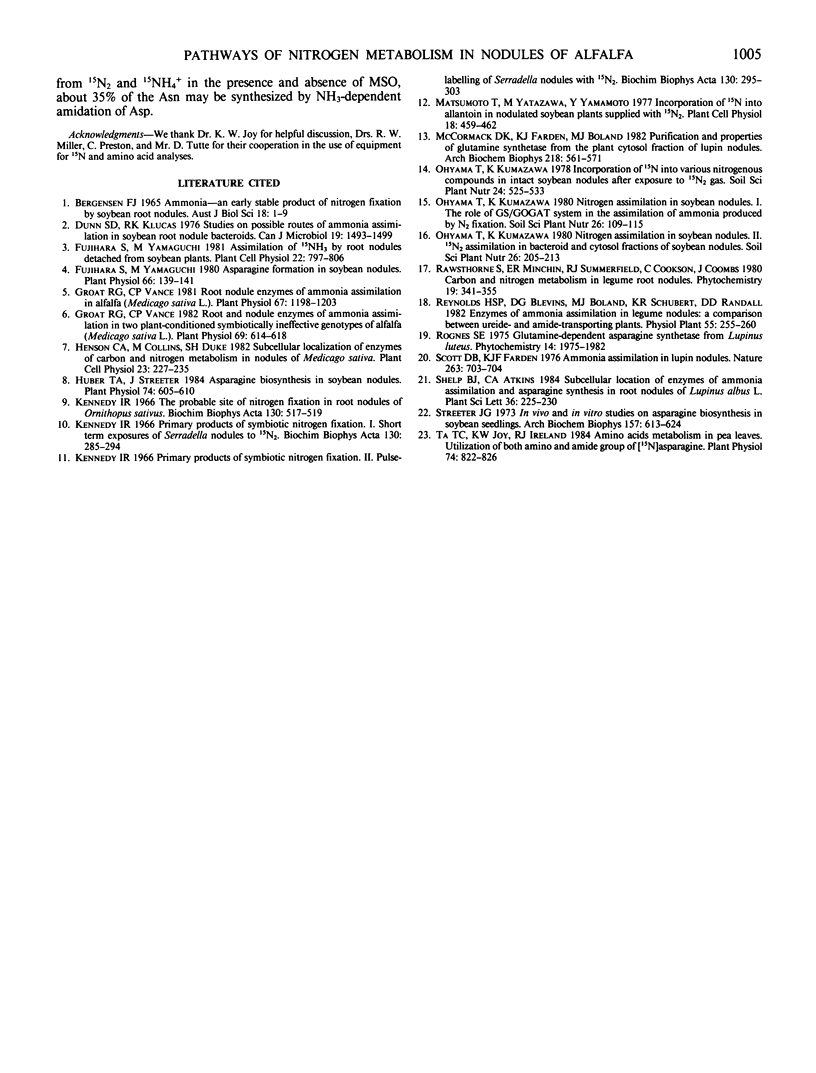
Images in this article
Selected References
These references are in PubMed. This may not be the complete list of references from this article.
- Dunn S. D., Klucas R. V. Studies on possible routes of ammonium assimilation in soybean root nodule bacteroids. Can J Microbiol. 1973 Dec;19(12):1493–1499. doi: 10.1139/m73-243. [DOI] [PubMed] [Google Scholar]
- Fujihara S., Yamaguchi M. Asparagine formation in soybean nodules. Plant Physiol. 1980 Jul;66(1):139–141. doi: 10.1104/pp.66.1.139. [DOI] [PMC free article] [PubMed] [Google Scholar]
- Groat R. G., Vance C. P. Root Nodule Enzymes of Ammonia Assimilation in Alfalfa (Medicago sativa L.) : DEVELOPMENTAL PATTERNS AND RESPONSE TO APPLIED NITROGEN. Plant Physiol. 1981 Jun;67(6):1198–1203. doi: 10.1104/pp.67.6.1198. [DOI] [PMC free article] [PubMed] [Google Scholar]
- Groat R. G., Vance C. P. Root and Nodule Enzymes of Ammonia Assimilation in Two Plant-Conditioned Symbiotically Ineffective Genotypes of Alfalfa (Medicago sativa L.). Plant Physiol. 1982 Mar;69(3):614–618. doi: 10.1104/pp.69.3.614. [DOI] [PMC free article] [PubMed] [Google Scholar]
- Huber T. A., Streeter J. G. Asparagine biosynthesis in soybean nodules. Plant Physiol. 1984 Mar;74(3):605–610. doi: 10.1104/pp.74.3.605. [DOI] [PMC free article] [PubMed] [Google Scholar]
- Kennedy I. R., Parker C. A., Kidby D. K. The probable site of nitrogen fixation in root nodules of Ornithopus sativus. Biochim Biophys Acta. 1966 Dec 28;130(2):517–519. doi: 10.1016/0304-4165(66)90249-2. [DOI] [PubMed] [Google Scholar]
- Kennedy I. R. Primary products of symbiotic nitrogen fixation. I. Short-term exposures of serradella nodules to 15N2. Biochim Biophys Acta. 1966 Dec 28;130(2):285–294. doi: 10.1016/0304-4165(66)90223-6. [DOI] [PubMed] [Google Scholar]
- Kennedy I. R. Primary products of symbiotic nitrogen fixation. II. Pulse-labelling of serradella nodules with 15N2. Biochim Biophys Acta. 1966 Dec 28;130(2):295–303. doi: 10.1016/0304-4165(66)90224-8. [DOI] [PubMed] [Google Scholar]
- Mc Cormack D. K., Farnden K. J., Boland M. J. Purification and properties of glutamine synthetase from the plant cytosol fraction of lupin nodules. Arch Biochem Biophys. 1982 Oct 15;218(2):561–571. doi: 10.1016/0003-9861(82)90380-0. [DOI] [PubMed] [Google Scholar]
- Streeter J. G. In vivo and in vitro studies on asparagine biosynthesis in soybean seedlings. Arch Biochem Biophys. 1973 Aug;157(2):613–624. doi: 10.1016/0003-9861(73)90681-4. [DOI] [PubMed] [Google Scholar]
- Ta T. C., Joy K. W., Ireland R. J. Amino Acid metabolism in pea leaves : utilization of nitrogen from amide and amino groups of [N]asparagine. Plant Physiol. 1984 Apr;74(4):822–826. doi: 10.1104/pp.74.4.822. [DOI] [PMC free article] [PubMed] [Google Scholar]



